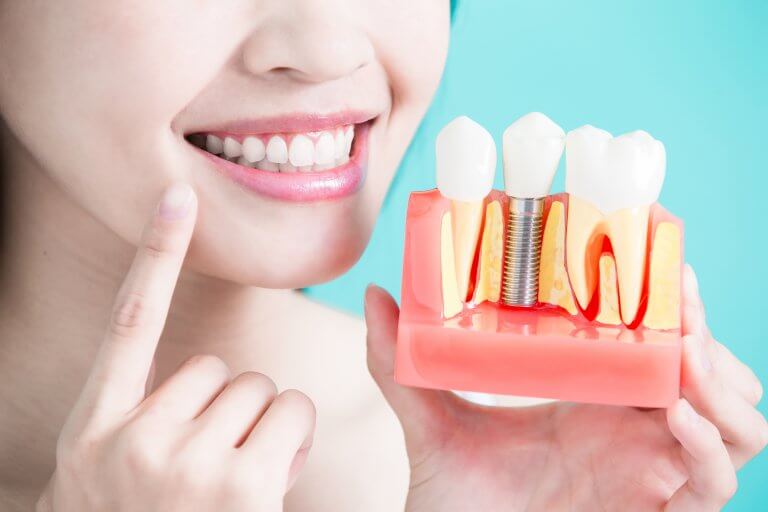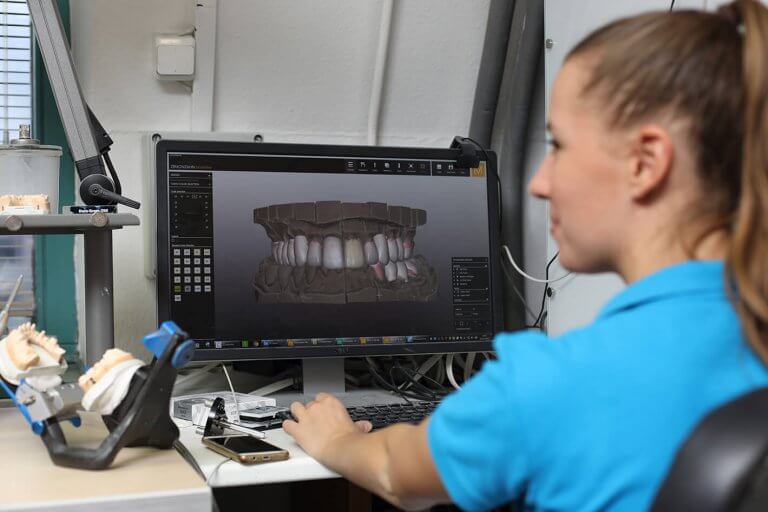Losing a tooth is not only an aesthetic issue, as it effects the entire jawbone, causing functional troubles as well. Thanks to dental implants, this is no longer a threat to our health. In the final article of our series, we focus on the last stage of tooth replacement.
In the previous articles we discussed what dental implants are, how they work, and what to expect during the healing period. After this stage, once the implant is exposed, and the gum has reached its final shape, comes the last part of the treatment, which is the crown work. This final phase is carried out by a aesthetic dentist instead of a surgeon. Dr.Peter Dudas will be our guide for this stage.
Make it glitter. It’s a crown after all.
Without a doubt, this the most interesting, and most spectacular part of the entire treatment. During this final stage, the actual tooth replacement is carried out. So this is what’s placed on the implant:
“The abutment which is placed on top of the implant already sticks out of the gum. This is the artificial equivalent of a prepared tooth.” This abutment can be made of titanium or metal-free zirconium. The only difference is in the final aesthetic result. Zirconium reflects light in a similar way to our own teeth. It is normally used for the replacement of frontal, more visible teeth. The finalized crown will be fitted on top of this abutment. In some cases, the abutment and the crown form a single unit. Crowns can be porcelain fused to metal, or purely zirconium.
The process of making a crown
The first step is always the impression taking. “There are three different methods for this. Two are these are almost the same, the closed and open impression taking trays. The third one is the modern, comfortable digital scanning. In order to get the most accurate digital impression, we use an oral-scanner. This special camera takes up to 300 images per second. As we move it around the mouth, it sends the scanned images to computer. With a special program we create a 3D image, that can be sent to our technicians almost immediately.”
Each case is different, requiring a specific technic for impression taking. Porcelain fused to metal crowns are based on a gypsum model of the patient’s teeth. The dental technician uses wax to create the shape of the crown, then finalizes it based on that. Zirconium crowns are a designed and manufactured with the aid of a special computer program. The whole replacement is designed digitally and then carved out of a block of Zirconium by a milling machine.
The crowning ceremony, aka the fitting
The penultimate stage is the frame try, when the previously created crown frame is tried on the implant. If it fits, it is sent back to the lab for the final part. This is when a thin ceramic layer is applied on the crown, finalizing its shape and color. Then this crown is fitted on the implant, and that’s it. Mission accomplished, tooth replaced. The entire process takes up to 5-10 days, depending on the amount of crowns required.
Implants are designed to provide a lifelong solution. However, in order to make sure they last that long, proper dental hygiene has to be maintained. Artificial teeth requires the same care and attention as our own teeth. Brushing twice a day, using dental floss, and attending regular checkups are a must. Not a big price to pay, because in return we can smile/eat/talk with confidence for the rest of our lives.

